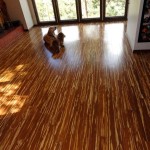Should I Use Treated Plywood for Subfloor?
When it comes to selecting the right material for your subfloor, treated plywood is often considered. However, it's essential to understand the pros and cons before making a decision. Here are some factors to consider:
### Advantages of Treated Plywood for SubfloorMoisture Resistance: Treated plywood undergoes a chemical treatment that makes it resistant to moisture, decay, and insects. This is crucial for subfloors that may be exposed to high levels of moisture, such as in bathrooms, basements, or areas with heavy rainfall.
Structural Strength: Plywood is generally stronger than oriented strand board (OSB), which is another common subfloor material. Treated plywood provides excellent support for flooring and heavy items.
Durability: The chemical treatment used in treated plywood enhances its durability, making it less susceptible to damage from moisture, rot, and insects.
### Disadvantages of Treated Plywood for SubfloorCost: Treated plywood is typically more expensive than untreated plywood or OSB. The chemical treatment adds to the cost of production.
Chemical Concerns: The chemicals used to treat plywood can be harmful if inhaled or ingested. Proper ventilation and protective gear are necessary when installing treated plywood.
Weight: Treated plywood is heavier than untreated plywood or OSB, which can make transportation and installation more difficult.
### Alternatives to Treated Plywood for SubfloorIn some cases, untreated plywood or OSB may be a better choice for your subfloor. Here's why:
Untreated Plywood: Untreated plywood is a good option for dry areas that are well-ventilated. It's less expensive than treated plywood but may not provide the same level of moisture resistance.
OSB: Oriented strand board (OSB) is a cost-effective and strong subfloor material. It has similar structural properties to treated plywood but is less resistant to moisture.
### Final Decision: Treated Plywood vs. AlternativesUltimately, the best choice for your subfloor depends on your specific needs and budget. Consider the following:
- Moisture Level: If moisture exposure is a concern, treated plywood is the best choice.
- Budget: If cost is a priority, untreated plywood or OSB may be more suitable.
- Weight: If transporting and installing heavy materials is an issue, untreated plywood or OSB may be easier to work with.

Best Bathroom Subfloor Material At Improvements

Installing Wood Subfloors Over Concrete Hardwood Floors

Pressure Treated Plywood Theplywood Com

Is Pressure Treated Wood Right For You

Plywood Floors All You Need To Know Bob Vila

Plytanium S I Floor Plywood Subfloor Panels Georgia Pacific

Plytanium S I Floor Plywood Subfloor Panels Georgia Pacific

Which Wood Is Best For Flooring Easiklip Floors

What Type Of Plywood To Use For A Shed

Pressure Treated Lumber Raised Floor Living Pro
See Also







